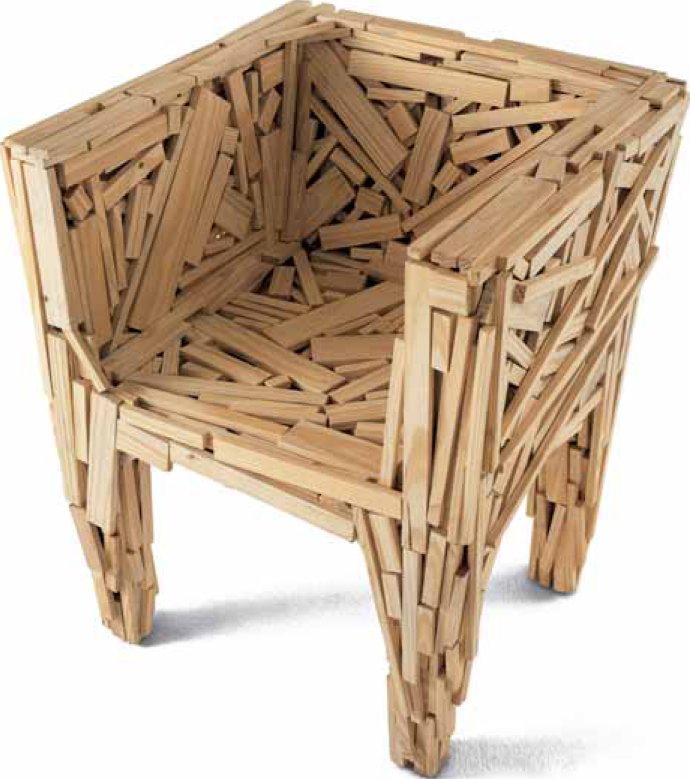The name pine suggests scented temperate forest, but it’s impossible to describe pine as a specific wood, because it’s actually a family of woods, which includes trees with evocative names such as sugar pine and Table Mountain pine, as well as the perhaps more well known Scots pine, spruce pine and yellow pine. Its timber ranges from a gummy, resinous wood to a warm toasted blonde pine, with a white sapwood and a heartwood varying from light yellow-brown to reddish brown, often with a faint scent of resin.
Pines are one of the most widely recognized and used timbers, chosen mainly for their good range of structural properties, including strength, stiffness, good workability, excellent stability and low shrinkage. Due to the fact that its growth range varies from hot to cold climates, the weight of pines greatly varies. Although pine is itself a family it is also part of a larger group that, together with spruce and larch, is known under the collective name of ‘deal’, a term used to describe coniferous softwoods.
Apart from scented forests, the other association of pine is its ‘country kitchen’ aesthetic, which seemed to dominate European kitchen design for a large part of the late twentieth century. In contrast, what I like about the Favela armchair by Fernando and Humberto Campana is the adhoc nature of the design and construction, something that seems appropriate for a timber with so many diverse applications.
Image: Favela chair, Fernando + Humberto Campana

Key features
•390-690 kg/m3 (24-43 lbs/ft3) Straight even grain
•Easy to work
•Finishes well
•Low shrinkage
•Low strength
Mainly Canada and the USA, UK, mainland Europe and the Scandinavian countries; however, pine grows in countries as far south as Portugal and as far north as Siberia. The colder the climate, the slower the growth and the better the quality.
Cost
Most pines are generally moderately priced.
Sustainability issues
Pines are a fast growing tree and so can be seen as renewable under the correct forestry stewardship. One of the interesting aspects of pine trees in relation to their growth is that they are often planted next to ‘nurse’ oak trees, which protect the pine saplings from wind while allowing sunlight to penetrate.
Production
Pines are generally easy to work; however, the sticky resin in some pines can be problematic. Dead knots can also give problems by dropping out. They glue well unless the piece of wood is particularly resinous. They also accept stains, paints, oil and lacquers well.
Typical applications
The excellent stability of pine makes it particularly suitable for pattern making, doors and drawing boards. It is also used for light and medium construction, boat building, joinery and furniture making and telegraph poles. Like Maple, pines are also valued for their by-products. The resin secreted by pines has a large number of uses that include resin, tar and turpentine.
| + | – |
|
–Easy to work –Good dimensional stability –Accepts finishes well –Sustainable |
–Not especially strong –Dead knots can drop out of the wood |
